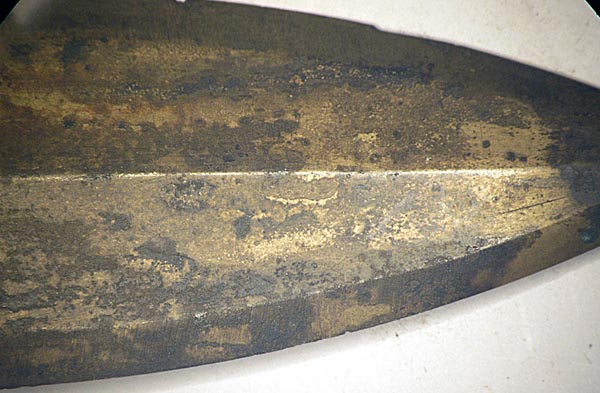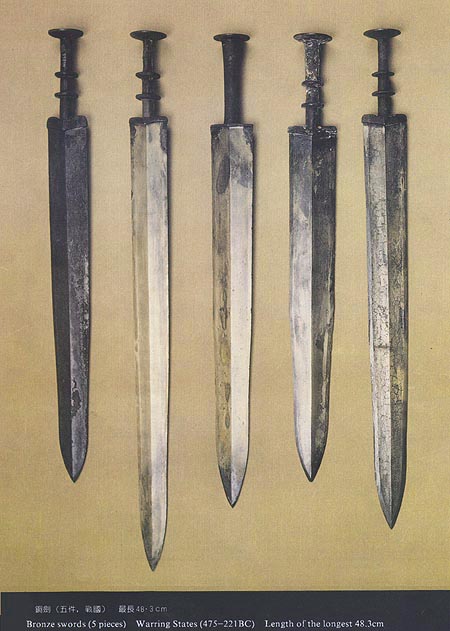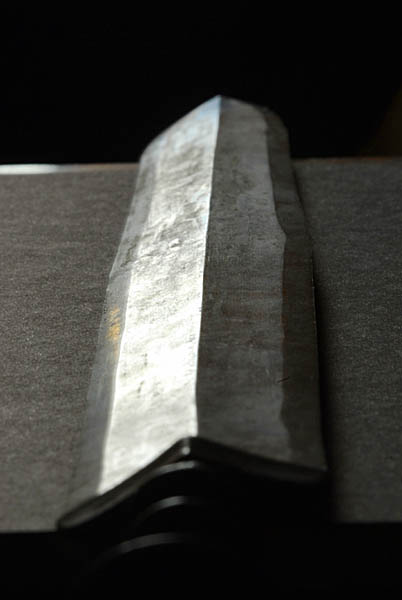|
Antique Chinese
Warring States Sword (475 - 221 BC) Early
Chinese
bronze swords from the Warring States Period (475 -
221 BC) were made
with high precision and often used advanced
metallurgy. This 45
cm. long sword is of typical design and probably comes
from the State
of Chu. Many of
these swords were coated with anti-corrosion
protective layers, rumored to consist of a form of
copper
sulfide.
The
tin rich
alloys sometimes used for blades and anti-corrosive
treatments can
preserve a sword's
sharpness for millennia. Swords that did not suffer
heavy corrosion in
the ground can be as sharp as a modern razor.
Images The
images
below show the sword edge on, left, and
broadside, right. In
spite of their wide blades, these swords are
relatively thin and well
tapered making them light and well balanced. This
sword weighs about
500 grams. The majority of the blades from the period
also have a waist
where the taper becomes more pronounced. This abrupt
change in tapper
can be seen in the right image a little less than half
way from the tip
to the hilt.
Details Images showing the area where the
blade
joins
the hilt.
Finish It's
difficult
to photograph the finish on the surface of a sword's
blade.
Swords without thick patina or swords smooth uniform
patinas
often appear to have had almost mirror like
surfaces. This can be
seen by pointing
the sword away from the eye and sighting down the
blade
towards a bright light. The image below is a best
attempt to do this
with a camera. In addition to the
polished look, the surface of many swords show a
slight undulation
along the blade's length, presumably from the
polishing process.
An enlargement of the
blade
near the tip shows the mottled look of the yellow and
black areas. Such
unevenness could occur from anti-corrosion treatments
where the blade
is dipped in a liquid or powder and possibly
re-heated. The
unevenness is due to the concentration and/or depth of
the
anti-corrosion treatment, and only appears after very
long aging.

Many ancient bronze
artifacts
have green patinas of one sort or another as do many
swords. However, a
significant number of swords have survived without
this typical green
corrosion. Many of the
swords that have not corroded have the same golden,
gray/black
appearance and spotty wear patterns.
The five swords below
are from
the book "Ba Shu Bronze Ware", which was compiled by
the Provincial
Museum of Sichuan. The sword on the left has turned
completly black
while the others have what appears to be a superficial
protective
layers. The
sword on the right has the same blade design as the
sword above.
 References General Info Wiki
Warring
States Period http://www.christies.com/lotfinder/lot_details.aspx?intObjectID=5231885 |





